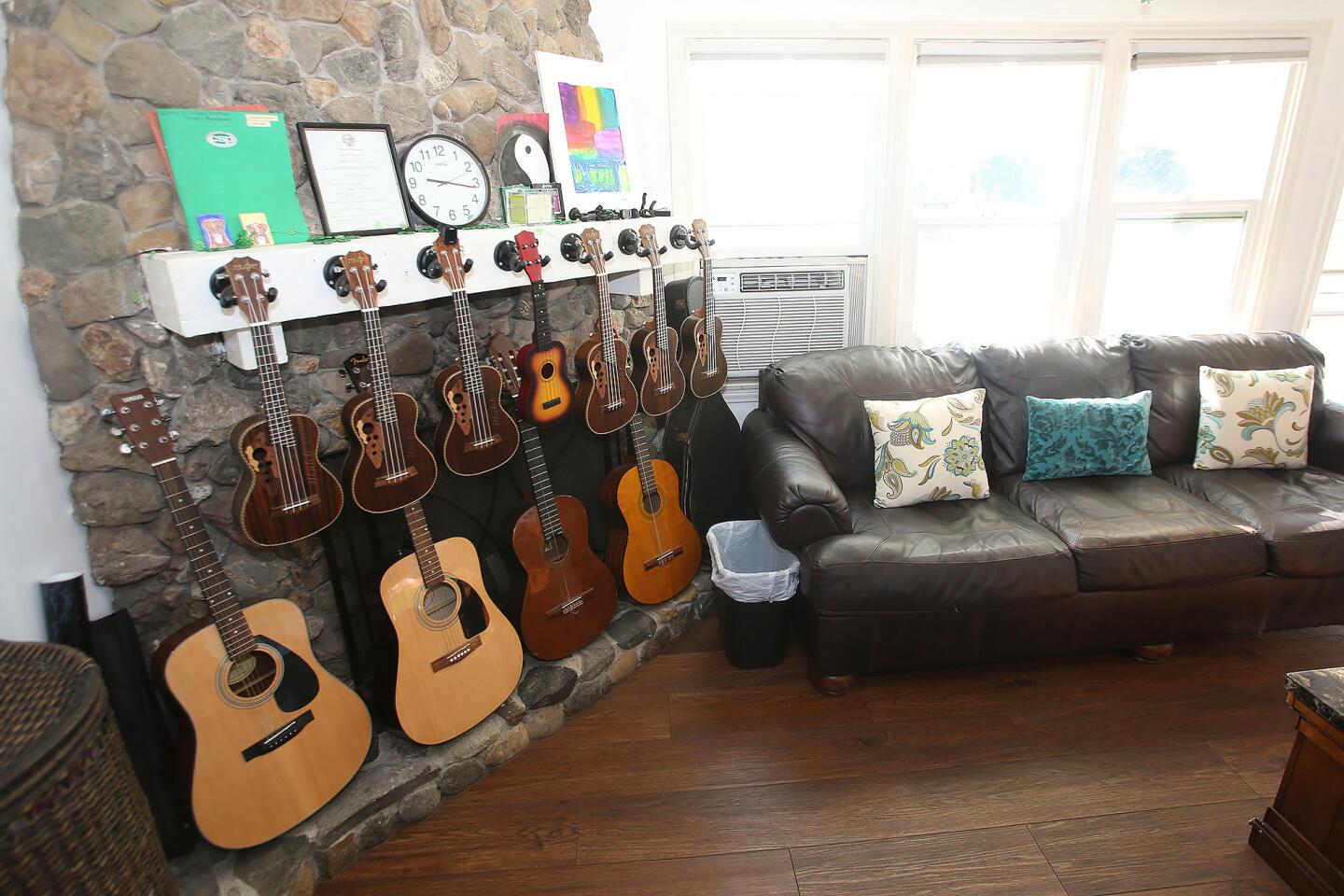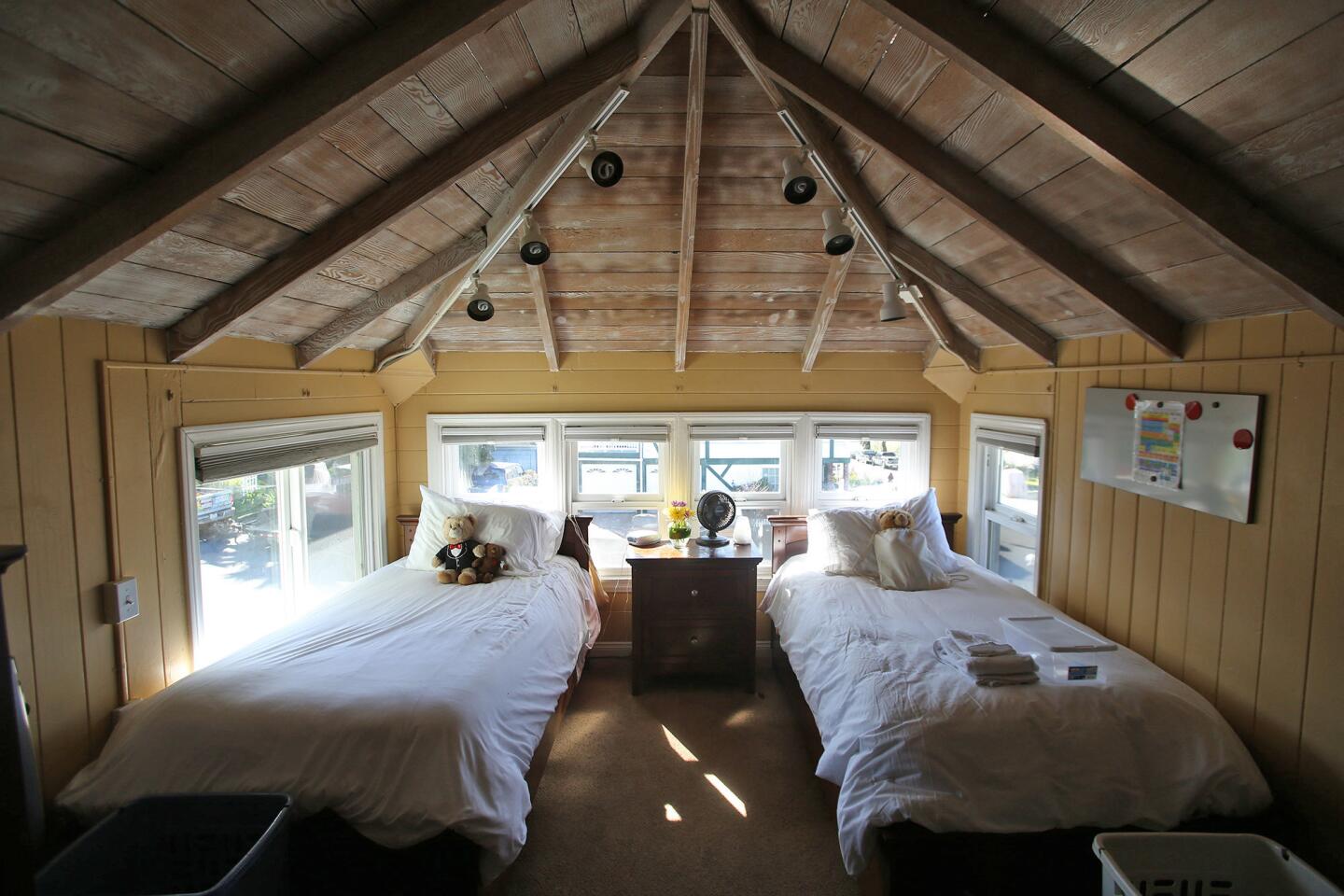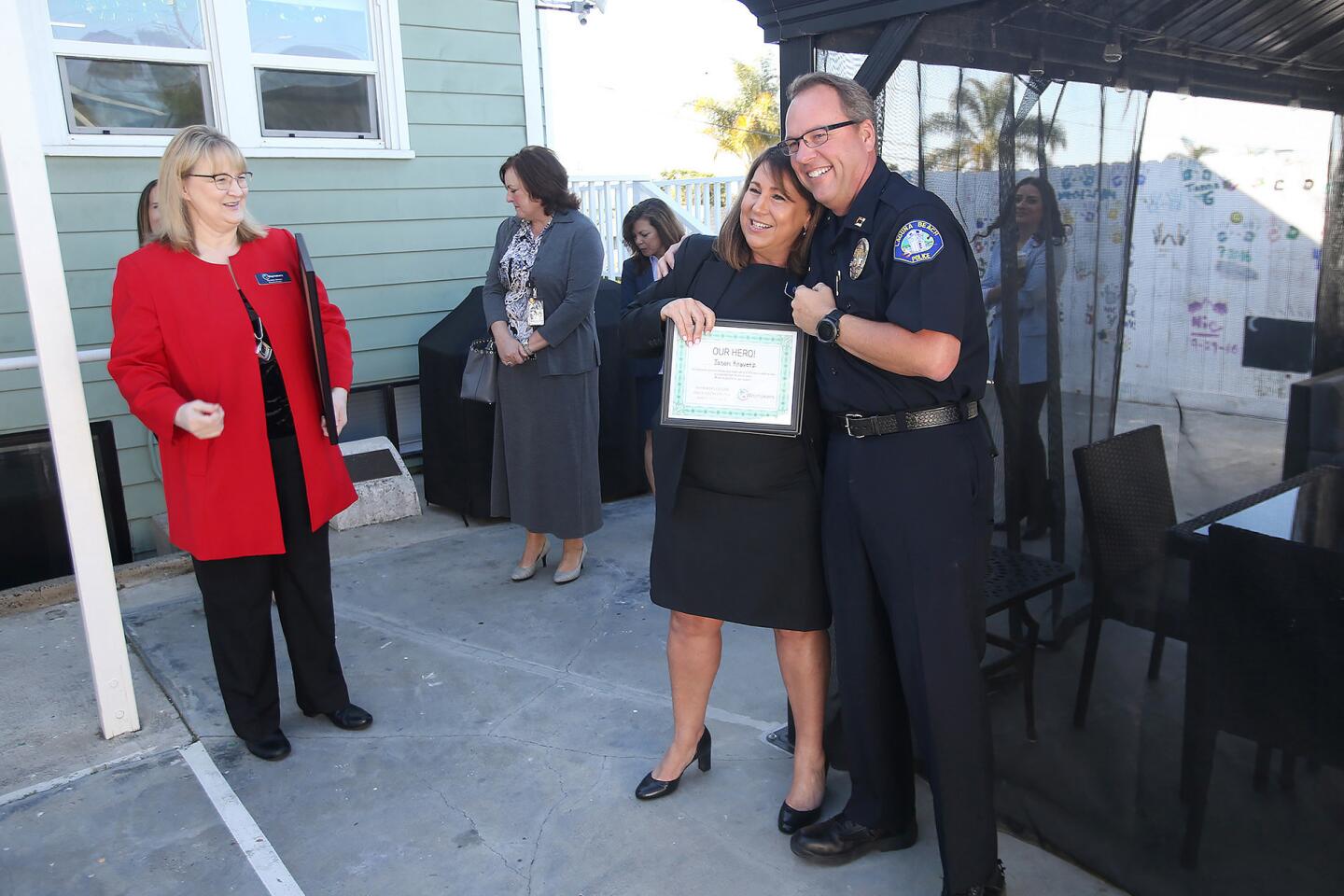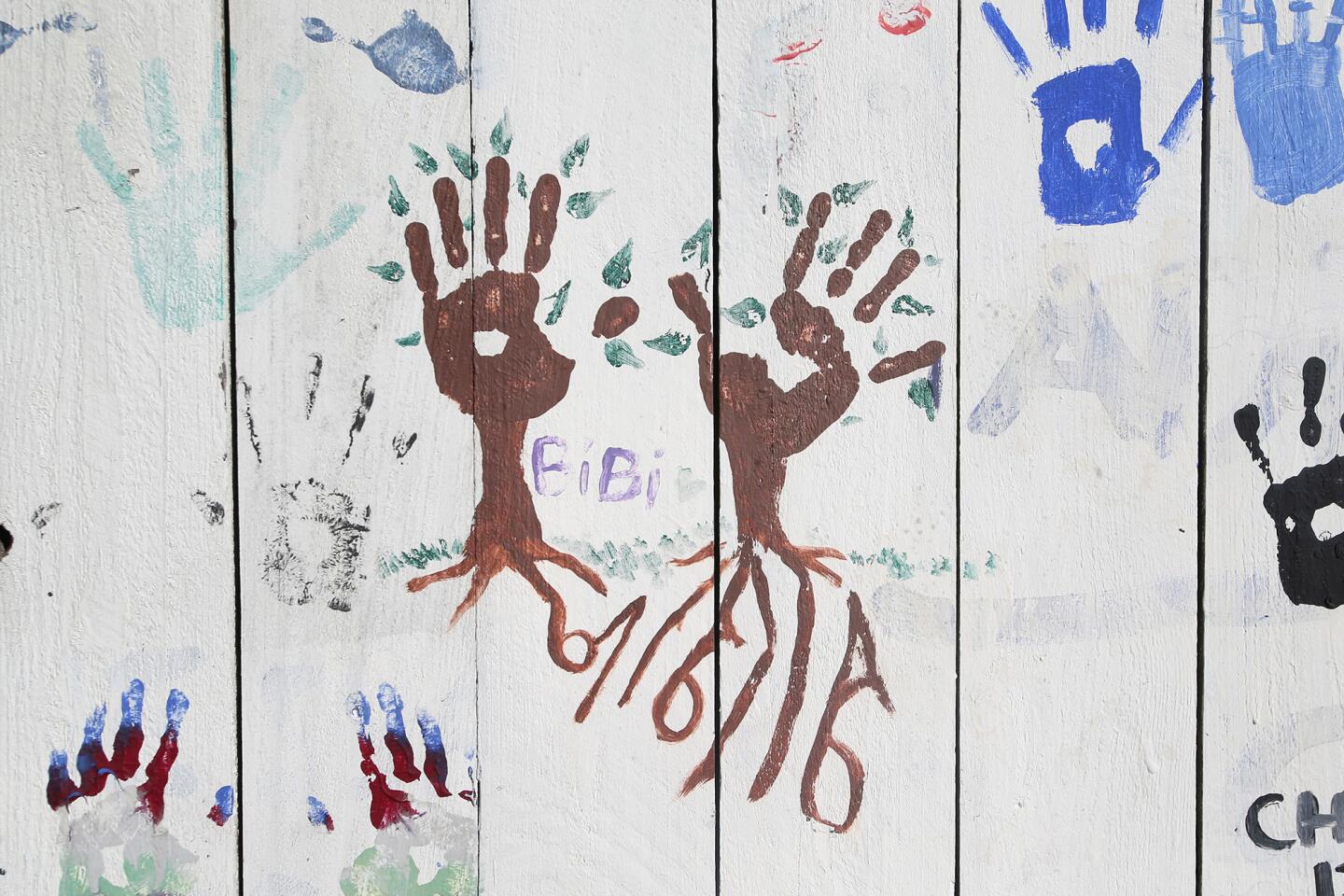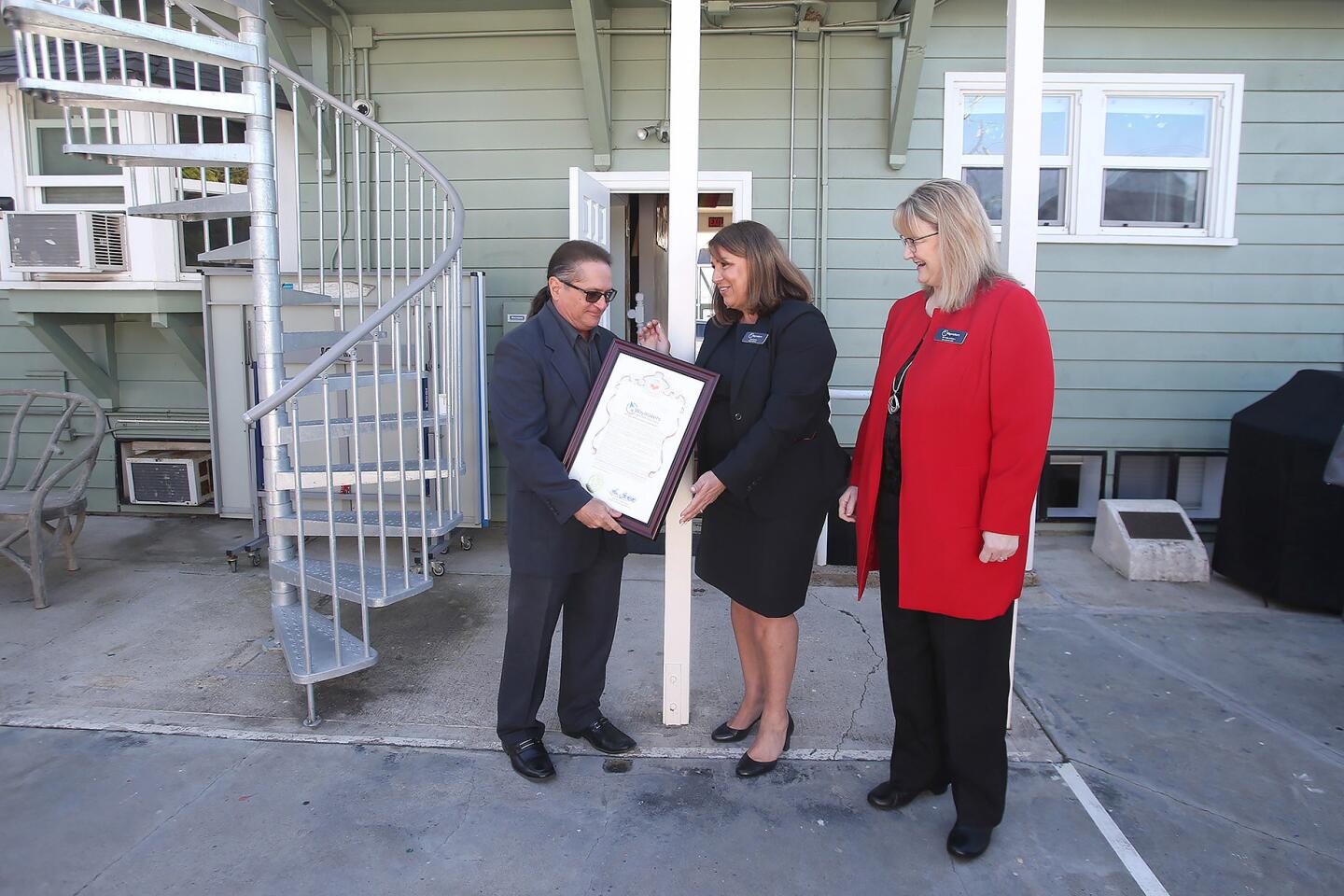‘The greatest gift’: Waymakers’ Laguna Beach Youth Shelter celebrates 40 years
- Share via
Forty years after opening as the first youth shelter in Orange County, the Laguna Beach Youth Shelter has made a way for itself.
The shelter, operated by Santa Ana-based nonprofit Waymakers, began in 1979 as a place for homeless and runaway youths. Today, the shelter serves up to six young people at a time who suffer from mental health issues that have led to self-harm.
The shelter celebrated its 40th anniversary last week with a day-long open house. Visitors entering the sunny front family room could tour the 80-year-old home’s three bedrooms, basement recreation room and backyard. About 100 people ages 12 to 17 filter through the shelter each year for a three-week program that aims to give them therapy, coping skills and healthy routines.
“Graduation of the program here is really just the beginning of something new in their lives,” said Carol Carlson, the shelter’s program director.
Each morning, the guests wake up around 7 for a “shower, shampoo and shine” before eating together for a homemade meal at the dining room table. They write their daily goals on a chart on the wall and then go on a power walk before settling in at the house for study time, therapy and plenty of rest and leisure.
The kids are required to go to individual therapy once a day with one of Waymakers’ two licensed marriage and family therapists. They also do a group session several times a day and family therapy at least twice a week.
The one thing that’s not on the schedule? Electronics. The youths are not allowed access to phones or social media during their stay.
“We know they know how to use those things,” Carlson said. “We’re trying to teach them something new.”
Above the basement computer tables where the guests do their homework while they’re away from school, a sign reads, “No logging on to YouTube.” Instead of spending time in their rooms surfing the web, watching videos or roaming social media, they are encouraged to stay in the common areas to play games, read, write in journals, exercise or talk with their fellow guests.
All the while, Carlson said, they are learning coping mechanisms to deal with their issues.
“With mental illness … it makes you feel like you’re a stereo person living in a radio world,” Carlson said. “Sometimes the hopelessness is just overwhelming. And our goal is to make it so they can get through this really rough period in their lives and learn how to manage those symptoms and again reunify with their families.”
Twenty-four staff members work around the clock to feed the guests, clean the house, guide activities and offer other help. Melissa Whitworth, the shelter’s house supervisor, said the facility is often full of youth specialists, therapists and community volunteers.
“You just never know when crisis is going to strike,” Whitworth said. “You can never tell what’s going to happen, so you’ve got to be ready for it.”
Laguna Beach Police Chief Laura Farinella sometimes visits to share a meal with shelter residents. She said it’s important to make positive contact with them.
“We’ll sit around the table and we’ll ask them, ‘What is your experience with law enforcement?’ And they all kind of look down on their plate, because it has not been positive,” Farinella said. “That’s why we’re here. We want you to see that there’s another side of law enforcement and we’re here to help.”
The youths arrive at the shelter from all over Orange County and in a variety of conditions, Carlson said. Some have attempted suicide. Many are referred after a mental health check-in at an area hospital.
“They need a safe timeout so they won’t harm themselves,” said Carlson, who has volunteered or been employed at the shelter for 31 years.
Last year, 94% of shelter guests “successfully and positively” reunited with their family members, Carlson said.
In the past 40 years, the shelter has seen children’s needs change, Carlson said. In its first decade, most residents were homeless or runaways, though many likely had undiagnosed mental issues, she said. In the 1990s, drug and alcohol use spiked. The shelter responded with increased education.
By the 2000s, homelessness had again become a recurring theme. Today, Carlson said, about 30% of shelter guests don’t have secure housing. When those residents graduate from the program, Waymakers links them and their families with housing resources through the Orange County Health Care Agency.
As the shelter’s resources grew over the years, so did its waiting list. Waymakers took over operations of a youth shelter in Huntington Beach and celebrated its 12th anniversary there last year. Another Waymakers shelter opened in Tustin in 2016.
“We grew very responsibly,” Carlson said. “We stuck to what we knew how to do and we looked at the population we were serving and saw its needs.”
In the 31 years she has worked at the shelter — 21 as a staff member and 10 before that as a volunteer — Carlson said she has seen many graduates of the program return to the place that helped them.
She remembered a former resident who returned to the shelter as a grown man with his 3-year-old son. The man told her he had grown up in an abusive situation but that the shelter helped him break the cycle and change his family’s legacy.
“That is the greatest gift you could ever have,” she said, “to know that you helped somebody change their story, their future.”
All the latest on Orange County from Orange County.
Get our free TimesOC newsletter.
You may occasionally receive promotional content from the Daily Pilot.
